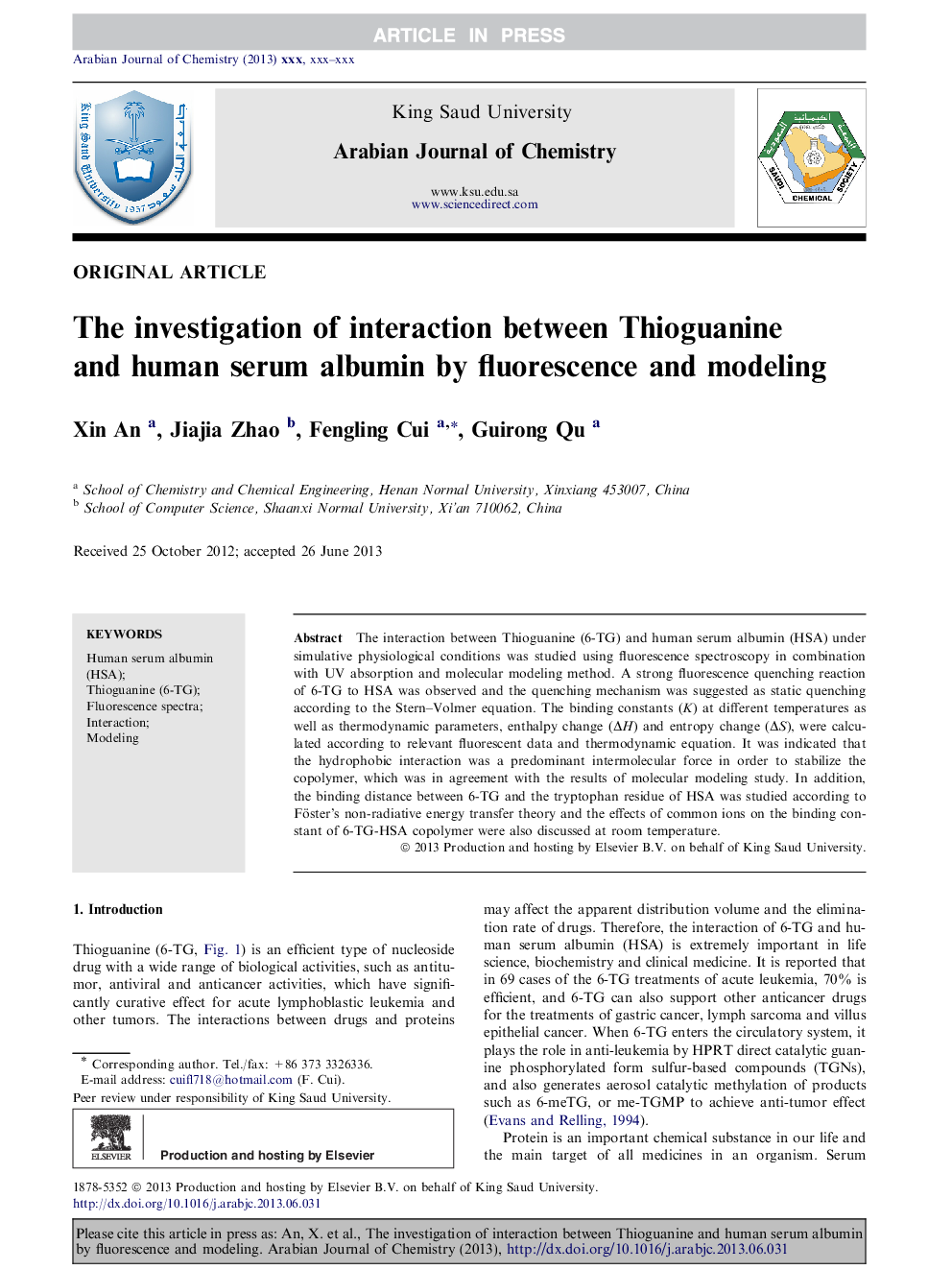| Article ID | Journal | Published Year | Pages | File Type |
|---|---|---|---|---|
| 5142364 | Arabian Journal of Chemistry | 2017 | 7 Pages |
Abstract
The interaction between Thioguanine (6-TG) and human serum albumin (HSA) under simulative physiological conditions was studied using fluorescence spectroscopy in combination with UV absorption and molecular modeling method. A strong fluorescence quenching reaction of 6-TG to HSA was observed and the quenching mechanism was suggested as static quenching according to the Stern-Volmer equation. The binding constants (K) at different temperatures as well as thermodynamic parameters, enthalpy change (ÎH) and entropy change (ÎS), were calculated according to relevant fluorescent data and thermodynamic equation. It was indicated that the hydrophobic interaction was a predominant intermolecular force in order to stabilize the copolymer, which was in agreement with the results of molecular modeling study. In addition, the binding distance between 6-TG and the tryptophan residue of HSA was studied according to Föster's non-radiative energy transfer theory and the effects of common ions on the binding constant of 6-TG-HSA copolymer were also discussed at room temperature.
Related Topics
Physical Sciences and Engineering
Chemistry
Chemistry (General)
Authors
Xin An, Jiajia Zhao, Fengling Cui, Guirong Qu,
